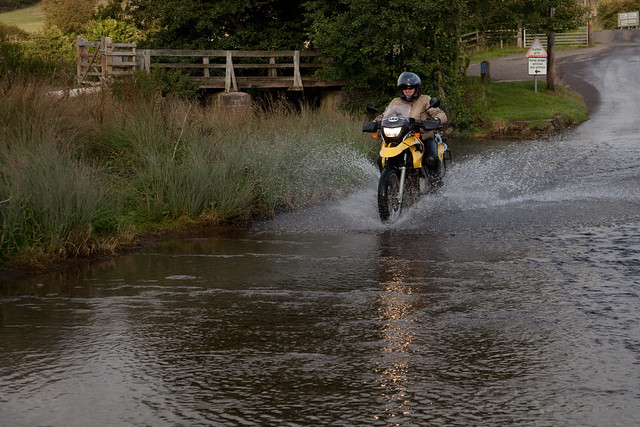To illustrate this the following images have been created with a single point as a focal point.

In this image the position chosen was to get the bike and rider into the top horizontal third slightly off centre with the reflected light leading the eye up the image. Also after an attempt at using blur to empahsie the water flow it was found that using a faster speed gave a sharper image and the increased feeling of motion by clearly showing the bow wave and hence the mechanical speed of the vehicle against the organic flow of the water.

This subject again uses a fast shutter speed but in this case to keep the background clear. I wanted to emphasise the contrast between the colour of the shirt and the "softness" of the person on the bike against the "hardness" of the steel water wall and slate paving floor. Also by placing the subject in the right hand vertical third it gives another take on motion within an image.

This image utilise the use of colour and texture to isolate the yellow poppy against the green of the other foliage. I used the first vertical third division to isolate and emphasise this against the green. I feel that by doing this you become aware of the subject then aware of the surroundings.